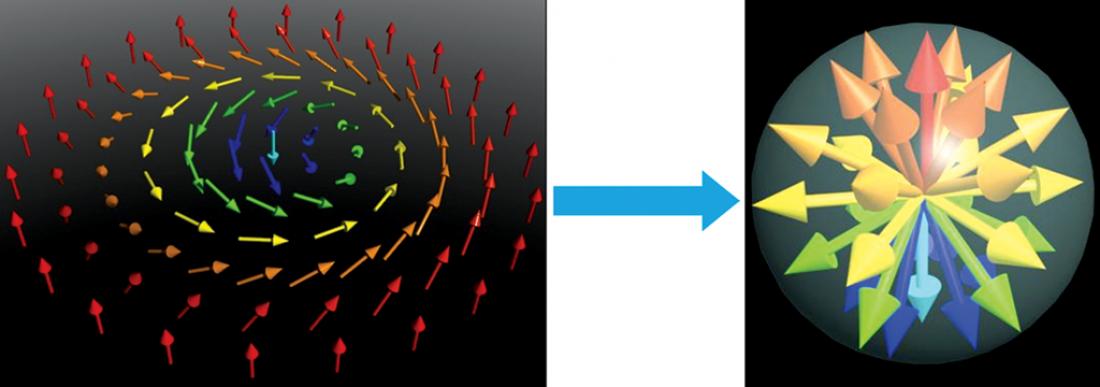Figure 1: In a skyrmion (left) the electron spins, represented as arrows about which the electrons are rotating, are arranged such they map onto the surface of a sphere (right).
A crystal consisting not of atoms but exotic swirling magnetic entities, called skyrmions, has been identified at near room-temperature by Yoshinori Tokura of the RIKEN Advanced Science Institute, Wako, and his colleagues from several other institutes in Japan[1]. Previous observations of a skyrmion crystal state, in transition-metal–silicide materials, have been at cryogenic temperatures below 40 kelvin. The existence of skyrmions at room temperature improves the practicality of harnessing their potential for use in novel computer memories.
Skyrmions are formed on some surfaces when the spins of the electrons—think of an arrow about which each electron rotates—collectively arrange such that they wrap around the surface of a sphere (Fig. 1). This pattern spirals in such a way that the spins on the outside point up whereas those at the core point down. This collection of spins can display many properties associated with a single particle. “A skyrmion crystal is the periodic array of these particle-like entities,” explains Tokura.
Earlier neutron-scattering experiments by other researchers identified this unusual effect in both iron–cobalt silicide and manganese silicide. Tokura and his team, however, investigated skyrmions in iron germanium. This alloy has the same cubic atomic crystal structure as iron–cobalt silicide and manganese silicide—the two materials in which skyrmions have been observed at low temperatures; but it remains in the necessary magnetic structure up to a much higher temperature.
Using a transmission electron microscope, the researchers probed the magnetization on the surface of polished layers of the iron–germanium alloy. They found tell-tale signs of skyrmions at temperatures up to 260 kelvin, particularly when they applied a small magnetic field perpendicularly to the surface.
This material also provides an excellent opportunity to investigate the stability of the skyrmion crystal, the team notes. Previous studies focused on very thin layers of material. Tokura and his team investigated the influence of film thickness and found that for thicknesses greater than the distance between skyrmions, about 75 nanometers in this case, the skyrmion crystal state is suppressed and a more conventional ferromagnetic phase starts to dominate.
Skyrmions could play an important role in the development of spintronics—using electron spin to carry information in the same way that electron charge is used in conventional electronics. “Skyrmion crystals could also be applied in memory and logic devices,” says Tokura. The advantage over conventional systems is that control is achieved using electric, rather than magnetic fields, which is known to be more efficient.
The corresponding author for this highlight is based at the Emergent Materials Department, RIKEN Advanced Science Institute



